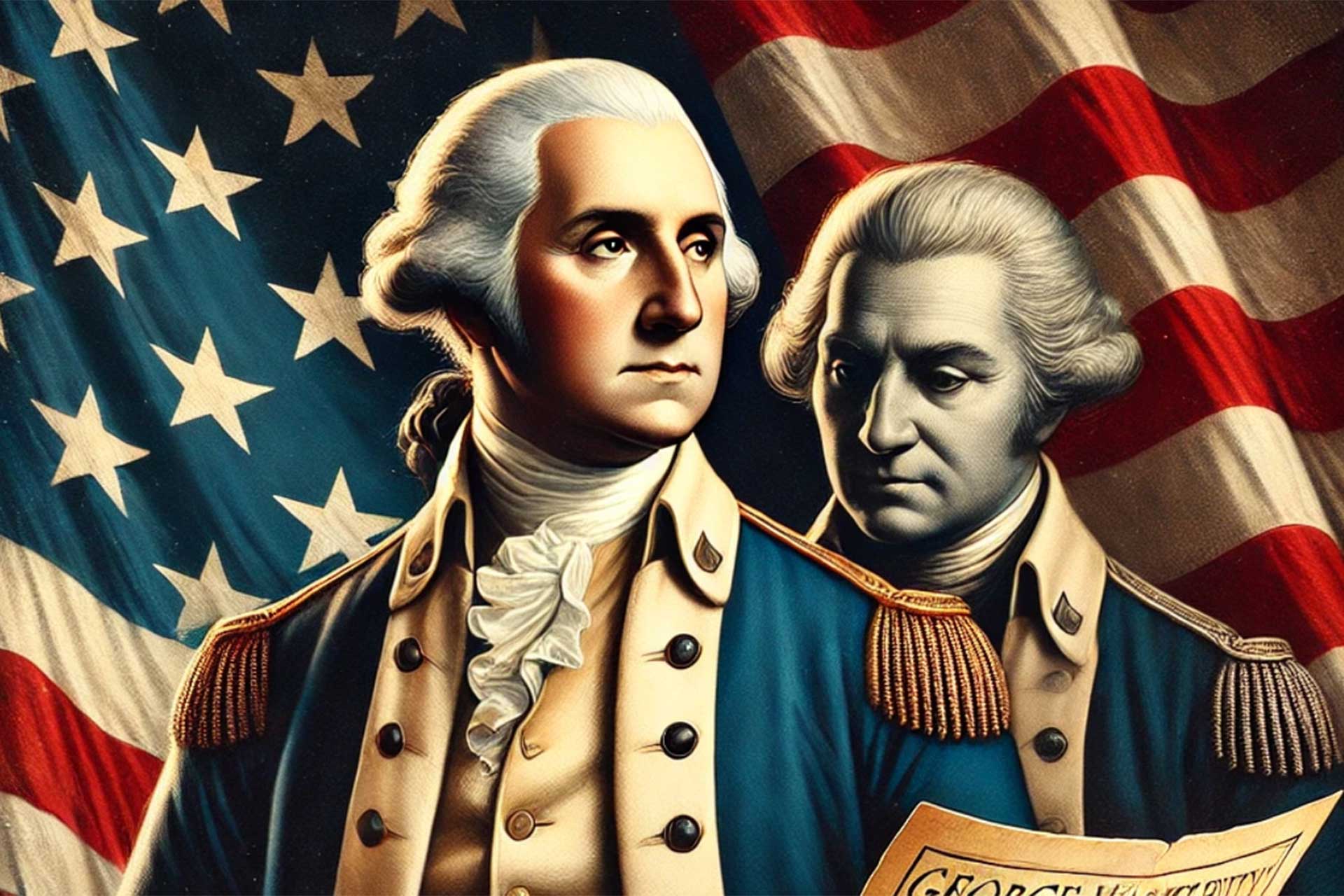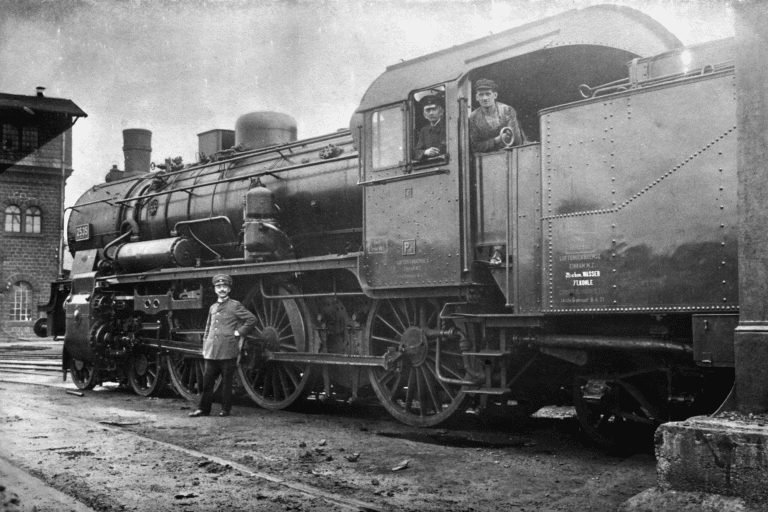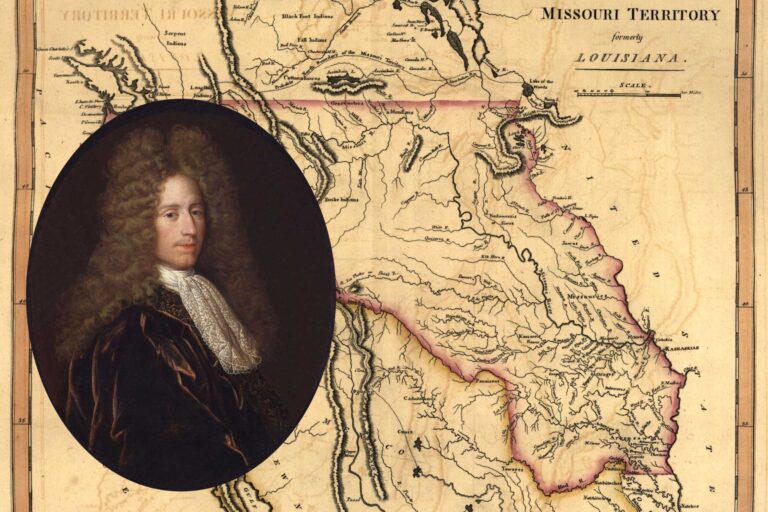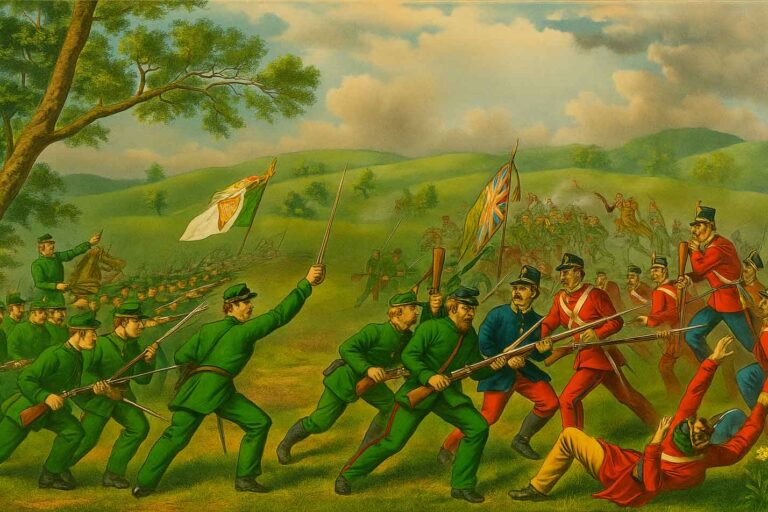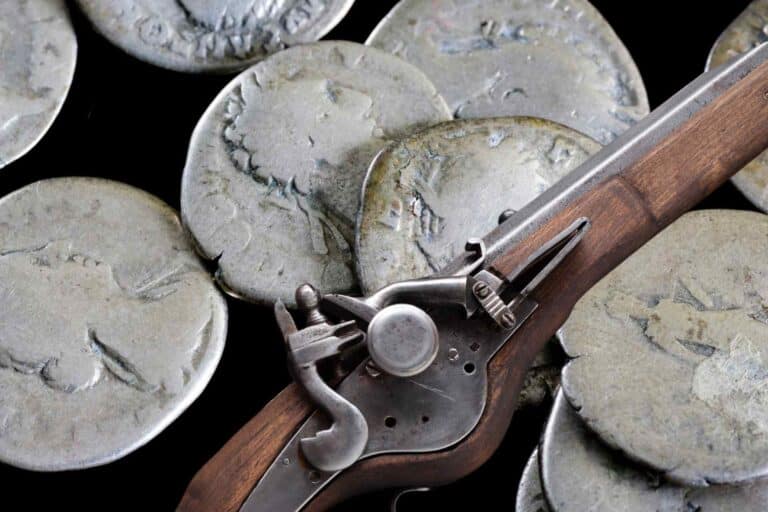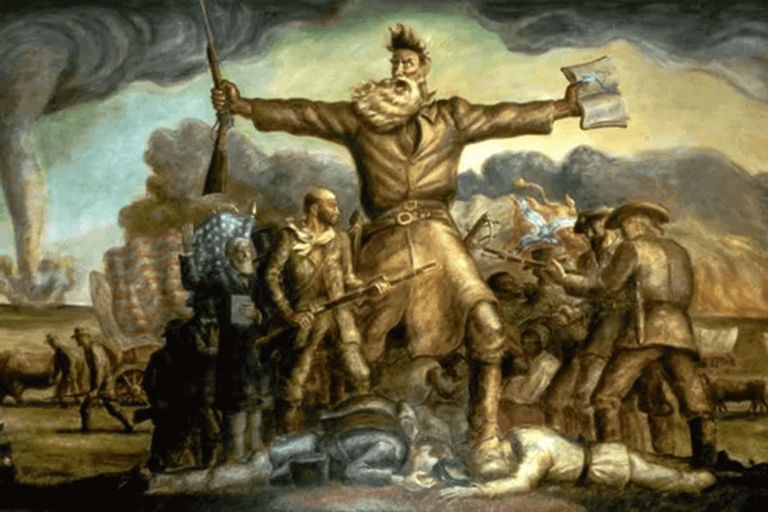George Washington’s Secret Weapon: The Culper Spy Ring
During the American Revolution, General George Washington founded the Culper Spy Ring, a covert group of spies operating out of New York and Long Island, as one of his most secretive strategies against the British when the outcome of the war hung precariously in the balance.
This clandestine network, largely unknown during the war, played a crucial role in gathering intelligence that proved pivotal for the Continental Army’s efforts. Their exploits, fraught with danger and mystery, are a testament to the unseen battles fought in the shadows of the more significant conflict that would determine the fate of a nation.
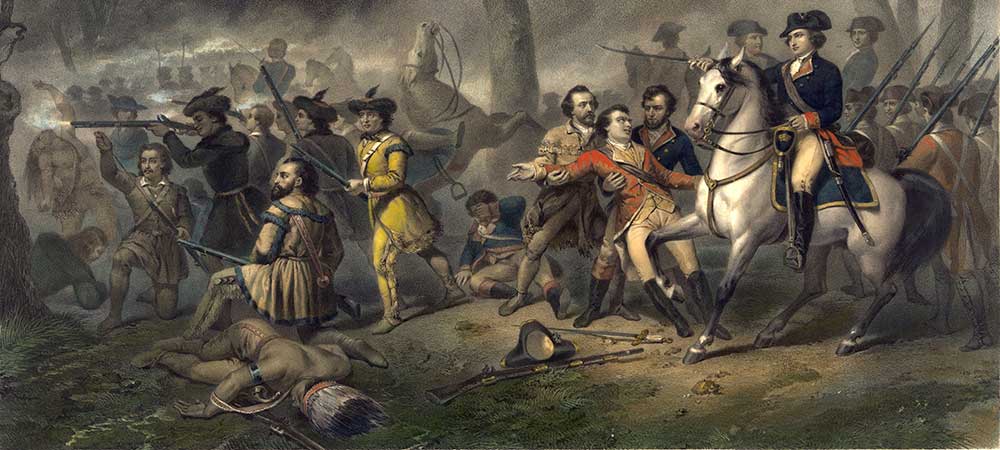
The Foundations of Espionage in the American Revolution
In the early stages of the American Revolution, the importance of intelligence was vividly underscored by the challenges faced by George Washington. Initially, information gathering could have been more coherent and unsystematic, relying on scattered reports from individuals like Lawrence Mascoll. These early efforts were precarious, as evidenced by the tragic fate of Captain Nathan Hale, who was captured and executed by the British in 1776 after attempting to infiltrate New York City under a false identity. Hale’s death highlighted the dire need for a more structured and covert approach to gathering crucial wartime intelligence.
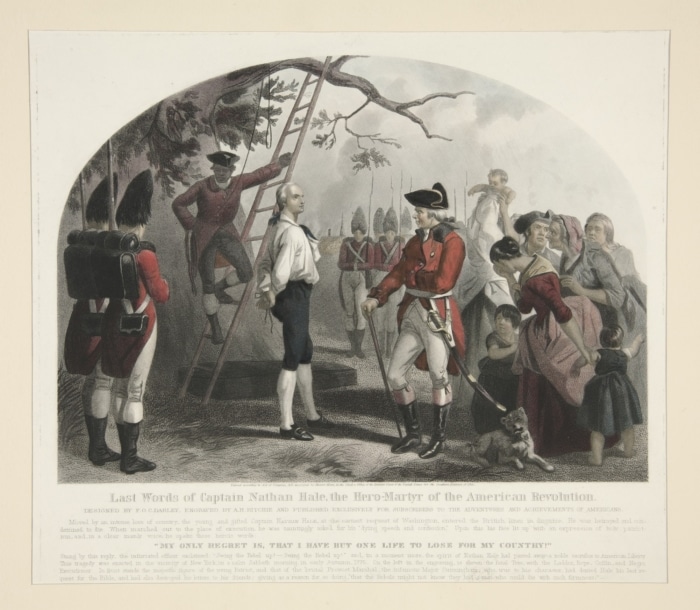
Washington’s realization of the need for a dependable intelligence system led him to initiate more organized espionage efforts. He sought to establish a consistent “channel of information” on Long Island, tapping William Heath and George Clinton for the task, although a formal network was not yet in place. The sporadic nature of these early intelligence activities demonstrated the inherent risks and the inefficacy of relying solely on military personnel for espionage.
The shift towards a more formalized spy network began to take shape under the guidance of William Duer, who recommended Nathaniel Sackett as an agent. Sackett’s initial successes, such as uncovering British plans to construct flat-bottomed boats for an assault on Philadelphia, proved the value of well-placed sources. However, Washington wanted to improve the pace and accuracy of the intelligence provided, leading to Sackett’s dismissal and the search for more effective operatives.
This search for reliable intelligence continued with establishing various networks, including one by American Colonel Elias Dayton on Staten Island, which coordinated with the Mersereau Ring. As the war progressed, the capture of Philadelphia in 1777 after the Battle of Brandywine necessitated an intensified focus on intelligence operations in occupied territories. Major John Clark was tasked with this critical role but was soon replaced due to health issues, illustrating the ongoing challenges and high turnover within the nascent American intelligence community.
These formative experiences underscored the essential role of espionage in warfare and set the stage for creating more sophisticated networks such as the Culper Spy Ring. Washington’s evolving strategy reflected his growing understanding that well-organized, discreet intelligence operations conducted by civilians could provide a significant advantage over the British, reshaping the American approach to military intelligence.
Foundation of the Culper Spy Ring: A Necessity for Revolutionary Intelligence
In the precarious days of 1778, George Washington was gravely disadvantaged by the lack of coordinated intelligence against the British forces. The critical situation led Washington to embrace the proposal from Lieutenant Caleb Brewster, who offered intelligence reports from Connecticut, starting with insights into British naval movements before the Battle of Rhode Island.
The emerging complexity of the war and the necessity for more structured intelligence prompted Washington to assign General Charles Scott the task of managing Brewster’s contributions and expanding the network. However, Major Benjamin Tallmadge, under Scott’s delegation, became instrumental in shaping what would become the Culper Spy Ring. Tallmadge, recognizing the value of a coordinated network over individual, temporary spies, proposed the establishment of embedded agents within New York City. This network aimed to gather intelligence and ensure a continuous and secure line of communication.
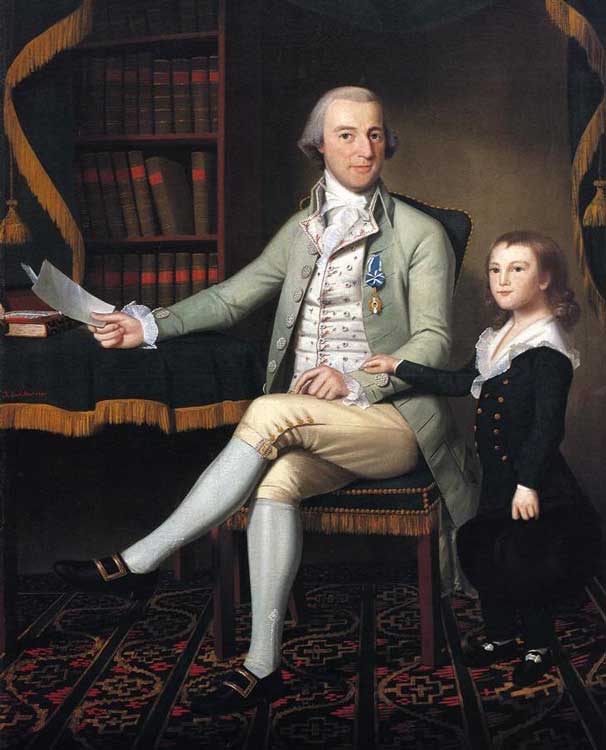
The initial operation centered around Abraham Woodhull, a childhood friend of Tallmadge from Setauket, Long Island. Washington suggested that Woodhull operate under the alias “Samuel Culper.” Woodhull began regular intelligence trips to New York City. His efforts were supported by establishing a complex communication system involving couriers like Austin Roe, who transported messages across perilous routes to link the spies with Washington’s headquarters.
The spy ring’s activities were characterized by their ingenuity and the use of coded messages to protect their information. One innovative method reportedly involved Anna Strong, a member of the Setauket community, who would signal Brewster’s presence by hanging a black petticoat on her clothesline. Such tactics facilitated the secure exchange of vital intelligence and exemplified the adaptive strategies that defined the Culper Spy Ring’s operations.
As the network grew, so did its achievements. Despite the inherent dangers—highlighted by Woodhull’s close call at a British checkpoint—the ring provided Washington with critical information ranging from British troop movements to their logistical strategies. This intelligence proved indispensable to the Continental Army, allowing for strategic decisions that would significantly impact the Revolutionary War’s course.
Expansion and Evolution of the Culper Spy Ring in 1779
As the American Revolution intensified, so did the need for more sophisticated espionage. In June 1779, Abraham Woodhull, operating under the alias “Samuel Culper Sr.,” recruited Robert Townsend, also known as “Samuel Culper Jr.,” to gather intelligence in New York City. Townsend’s business ventures in the city perfectly covered his clandestine activities. He directly interacted with British officers through his tailoring business and wrote a society column in a Loyalist newspaper, which allowed him intimate access to British gossip and plans.
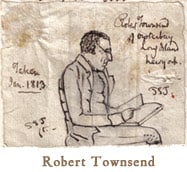
His dual role as a businessman and journalist, combined with his ownership interest in a coffeehouse alongside the newspaper’s owner James Rivington, who was also secretly part of the Culper Ring, allowed Townsend to seamlessly integrate into British society and collect valuable information without raising suspicions.
Townsend’s arrival marked a pivotal shift in the Culper Ring’s operations. With Townsend stationed in New York, Woodhull could remain in Setauket, reducing the risk of exposure and arrest. This period saw the refinement of the ring’s communication methods. Townsend would pass on the intelligence to a courier, originally Jonas Hawkins and later Austin Roe, who transported the information to Woodhull. Woodhull then analyzed the intelligence, adding his insights before passing it to Caleb Brewster. Brewster would transport these reports across Long Island Sound to Benjamin Tallmadge, who would forward them to George Washington.
However, the network faced challenges, particularly with the courier system. Jonas Hawkins, the initial courier, began to show signs of strain under the pressure of British patrols and the inherent dangers of his role. His reliability came into question in mid-1779 after he destroyed critical correspondence to avoid capture by the British, causing tensions within the ring. As a result, Austin Roe took over as the primary courier later that year, establishing a more stable and less conspicuous link between Townsend and the spy ring’s leadership.
The operational changes in 1779 enhanced the Culper Ring’s effectiveness and helped solidify the spy network as a critical component of the Revolutionary War effort. Townsend’s deep cover within New York City provided the Continental Army with consistent and reliable intelligence, crucial for outmaneuvering British forces. This transition period for the Culper Spy Ring demonstrated their ability to adapt and evolve in response to the shifting dynamics of war and espionage, setting a precedent for modern intelligence operations.
Intricate Operations of the Culper Spy Ring
The Culper Spy Ring, formed during the tumultuous years of the American Revolution, developed a sophisticated system of espionage that was crucial for the Continental Army. At the heart of its operations was an unyielding commitment to secrecy and protecting its members’ identities. George Washington himself was not privy to the true identities of all operatives, reflecting the high confidentiality level underpinning their missions. This secrecy extended to the ring’s core members, with key figures like Robert Townsend operating under aliases and insisting that even their closest collaborators not reveal their true identities.
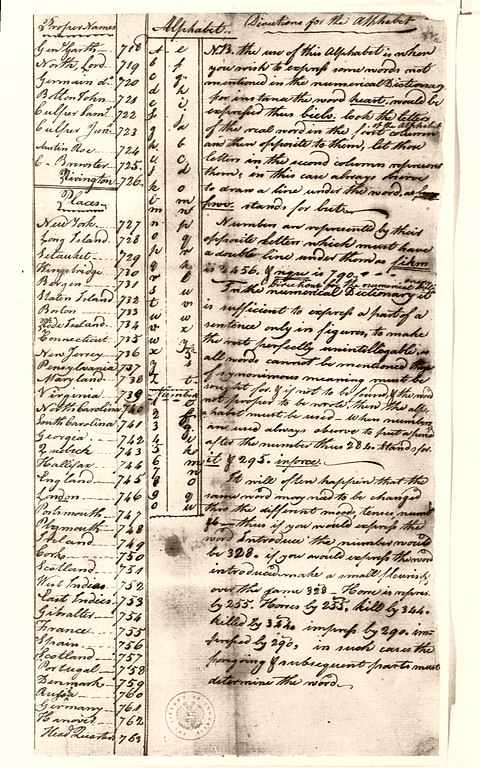
Communication within the Culper Ring was an exercise in ingenuity and caution. Initially, the spy network used basic methods such as coded messages subtly placed in newspapers or written with invisible ink, known as “sympathetic stain.” These messages appeared innocuous to the untrained eye but contained vital intelligence on British troop movements and strategies. The ring initially relied on a handful of codes memorized by agents, which included numerical representations for locations and critical individuals to reduce the risk of exposure if the messages were intercepted.
As the war progressed, Benjamin Tallmadge, who managed the ring’s operations, recognized the need for a more robust system. In 1779, he introduced a comprehensive codebook that significantly expanded the vocabulary available to the spies for their coded correspondence. This codebook contained lists of verbs, nouns, and code numbers for people and places, which were crucial for creating complex messages difficult for outsiders to decipher. Each ring member, including Washington, was assigned a code number to maintain anonymity and security within their communications. For example, Washington’s code number was 711.
The sophistication of the Culper Ring’s techniques represented a significant evolution in wartime espionage. Their methods demonstrated a marked departure from earlier, less organized attempts at gathering intelligence, such as Nathan Hale’s unfortunate mission. By employing advanced techniques like invisible ink and a detailed codebook, the Culper Ring not only provided Washington with invaluable intelligence but also set new standards in spycraft that influenced future espionage activities.
Expanding the Network: Associates of the Culper Spy Ring
The Culper Spy Ring’s effectiveness was bolstered by diverse individuals who contributed to its operations beyond the primary members. James Rivington, a newspaper owner and publisher in New York, played a critical role despite his public allegiance as a Loyalist. Unbeknownst to many, he was a secret ring member, providing invaluable information often disguised within his publications’ articles and society columns.
In 1781, George Smith, identified by his codename “S.G.,” joined the network, replacing “Culper Jr.” as a field agent. Smith, a resident of Nissequogue and a descendant of the founder of Smithtown, was recruited for his local connections and knowledge, vital for the ring’s operations on Long Island. Local historian Virginia Eckels Malone later chronicled his contributions, highlighting his significant but previously unrecognized role.
Additionally, brothers Nathaniel and Phillip Roe were instrumental in supporting the spy efforts, particularly in the areas beyond Setauket and Oyster Bay. Nathaniel provided critical intelligence while Phillip contributed material support, extending the ring’s influence and operational capacity across Long Island. Their involvement underscores the widespread network of local collaborators who risked their lives for the cause.
Selah Strong, another crucial yet often overlooked figure, was recognized for his contributions only centuries later. His strategic placement and actions significantly aided the movements and safety of Caleb Brewster’s whaleboat crew, which was essential for the secure transport of messages across Long Island Sound. The discovery of Strong’s role exemplifies how historical narratives evolve as new evidence comes to light, painting a fuller picture of the espionage activities during the Revolutionary War.
Unraveling the Enigma of Agent 355
Agent 355 remains one of the most mysterious figures within the Culper Spy Ring; her identity remains shrouded in secrecy and the subject of much historical debate. As a code name used within this intricate espionage network, Agent 355 was referenced as a pivotal contributor to one of the ring’s most significant successes—the exposure of Benedict Arnold’s treason. Despite her crucial role, historians continue to grapple with identifying her, with theories suggesting she could have been anyone from a high-society lady to a servant or enslaved person within British quarters.
The speculation around Agent 355’s identity highlights women’s unique advantages in espionage during the American Revolution. Under societal assumptions that women were not involved in political or military affairs, female spies could move more freely and observe without raising suspicions. This allowed them to gather critical information right under the noses of British commanders who seldom considered them threats. Agent 355’s contributions were so significant that some historians believe her intelligence directly led to the apprehension of Major John André, Arnold’s British liaison.
Various theories about her background suggest that Agent 355 might have been embedded within a Loyalist household or perhaps was even an enslaved person. This position would have provided her with ample opportunities to overhear crucial information regarding British plans and troop movements. Her access to such sensitive details and her anonymity made her an invaluable asset to Washington’s spy operations.
Further adding to the mystique, some sources speculate that the designation “355” might not refer to a specific person but was a generic code used for female agents within the ring. This theory is supported by the ambiguity and scant details in historical records, fueling ongoing debates about her role and identity. Nonetheless, whether Agent 355 was a singular individual or a symbol of multiple women’s contributions to the spy efforts, her legend encapsulates the vital yet often overlooked role women played in shaping the outcome of the American Revolution.
Culper Spy Ring’s Critical Alert Warning of Tryon’s Raid
The Culper Spy Ring’s intelligence was crucial in forewarning General George Washington about British Major General William Tryon’s raid in July 1779, an operation with sinister underpinnings. The British strategy, meticulously relayed by the spy ring, aimed to fragment Washington’s forces by creating a distraction, allowing Lieutenant General Sir Henry Clinton to launch a fragmented assault on the American troops. This maneuver weakened American defenses by drawing them into multiple, less manageable engagements across different fronts.
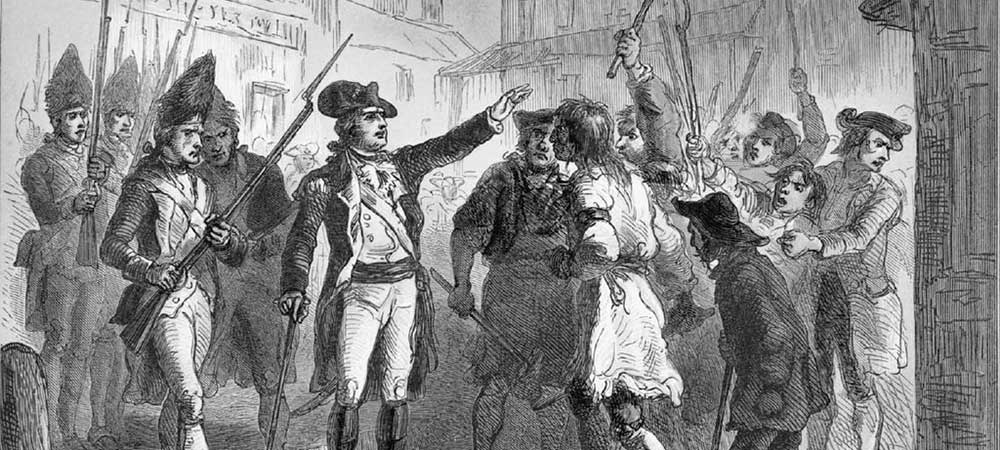
The spy ring’s timely dispatch allowed Washington to understand the full scope of the British military’s intentions. With this knowledge, Washington could strategize to mitigate the impact of Tryon’s raid, conserving crucial strength for more significant confrontations. The intelligence provided tactical advantages and showcased the strategic depth provided by the Culper Spy Ring’s operations. This episode exemplified the ring’s pivotal role in maintaining the cohesion and readiness of American forces against British stratagems during the Revolutionary War.
Strategic Insights: Thwarting British Plans in Rhode Island and the Currency Plot
The Culper Spy Ring was pivotal in uncovering British military strategies that could have significantly altered the course of the American Revolution. One such critical piece of intelligence involved a planned surprise attack on French forces under Lieutenant General Rochambeau in Newport, Rhode Island. In 1780, the French allied with the American rebels, and their troops were recuperating from their long and exhausting sea journey.
The British aimed to capitalize on their vulnerability before they could fully recuperate and pose a more substantial military presence. The timely intelligence the Culper Spy Ring provided allowed American forces to reinforce the French troops, effectively deterring a potentially devastating blow to the newly formed Franco-American alliance.
Additionally, the ring exposed a nefarious British economic warfare strategy aimed at destabilizing the American economy through counterfeiting. The British planned to undermine the American war effort by flooding the market with counterfeit Continental dollars. The spies discovered that the counterfeiting operation was not just a run-of-the-mill attempt at economic sabotage; the British intended to use the same paper stock as the Continental currency, making the fake bills nearly indistinguishable from genuine ones.
This revelation alarms the American leadership, prompting the Continental Congress to swiftly retire the existing bills and introduce new currency measures to protect the fledgling nation’s economic stability.
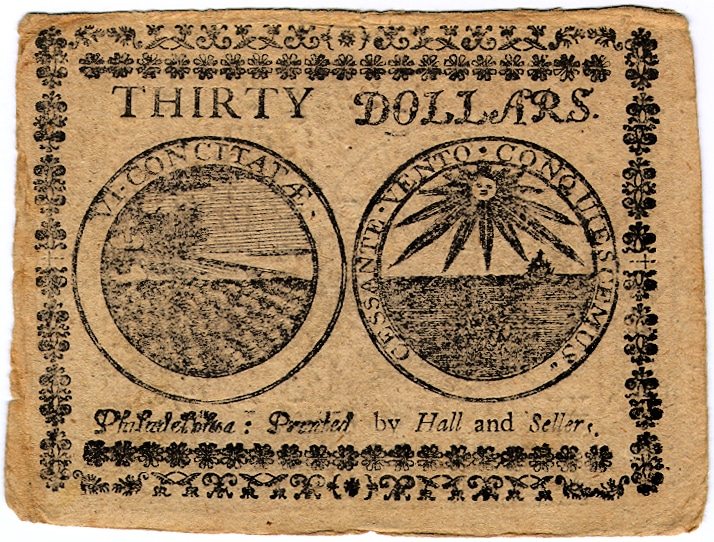
The Culper Spy Ring’s ability to provide such detailed and actionable intelligence was instrumental on both military and economic fronts. These interventions safeguarded critical military alliances and preserved the financial integrity of the American cause. The successful disruption of the British counterfeiting scheme marked a significant victory in the shadowy war of espionage and counter-espionage, highlighting the indispensable role of covert intelligence in national defense.
By averting these crises, the Culper Spy Ring demonstrated the profound impact of intelligence work in shaping war outcomes. Their efforts went beyond mere information gathering; they actively engaged in a sophisticated battle to protect American interests. As a result, the ring’s activities have become a celebrated chapter in the history of American espionage, showcasing the crucial interplay between military strategy and economic policy in the quest for independence.
Exposing Betrayal: The Culper Spy Ring and the Arnold-André Conspiracy
In one of the most notorious acts of treason in American history, the Culper Spy Ring was pivotal in uncovering Benedict Arnold’s plot to surrender West Point to the British in 1780. The conspiracy aimed to undermine the American struggle for independence by crippling a strategic point that controlled the Hudson River, a vital artery for the colonial forces. The spy ring’s vigilance began to pay off when they intercepted communications about a high-ranking American officer’s correspondence with British Major John André.
The plot thickened as the Culper Ring gathered more concrete evidence utilizing its extensive network. Agent 355, whose identity remains in mystery, provided critical intelligence that pointed directly to Arnold. The ring’s ability to penetrate deep into the British and Loyalist circles allowed them to acquire copies of letters exchanged between Arnold and André, detailing their plans to weaken American defenses and hand over West Point without a fight.

The culmination of the ring’s efforts came when American forces apprehended John André near Tarrytown, New York, as he attempted to return to British lines dressed in civilian clothes with incriminating documents hidden in his boot. Once delivered to American commanders, these documents explicitly outlined Arnold’s treacherous intentions and the agreed-upon terms of the fort’s surrender. André’s capture and subsequent plot unraveling spotlighted the Culper Spy Ring’s crucial role in safeguarding American interests.
Arnold, forewarned of André’s capture, narrowly escaped to a British ship, leaving his reputation and a promising military career in ruins. Meanwhile, John André was tried and executed as a spy, becoming a martyr in the eyes of the British and a symbol of treachery to the Americans. The event significantly boosted the morale and vigilance of American forces, thanks to the decisive intervention of the Culper Spy Ring, which had effectively thwarted one of the gravest threats to the American revolutionary cause.
On September 29, 1780, a military tribunal concluded that John André had trespassed on American soil under a false identity and disguise. They declared that André, the British Army’s Adjutant-General, should be regarded as a spy and, according to international law, must face execution. Sir Henry Clinton, who held André in high regard as his aide-de-camp, made every effort to save him. However, during their correspondence, George Washington insisted that the British exchange André for Benedict Arnold, who was now safe under British protection in New York.

Clinton, despite his disdain for Arnold, refused to surrender him. From his capture, André won the admiration of many Americans, including Alexander Hamilton. He was particularly taken by André’s blend of intellectual and personal grace, noting his “peculiar elegance of mind and manners, and the advantage of a pleasing person.” John Andre
On September 29, 1780, Major John André was convicted by a military tribunal for infiltrating American lines under an assumed name and in disguise. The board declared André, the Adjutant-General of the British Army, a spy and decreed that he should be executed according to nations’ established laws and customs. Sir Henry Clinton, who favored André as his aide-de-camp, exerted great effort to save him. During their negotiations, George Washington stipulated that André’s life could be exchanged for Benedict Arnold, who was under British protection in New York. Despite his dislike for Arnold, Clinton refused to extradite him.

André, from his arrest, gained the affection of many Americans, some of whom deeply regretted his sentence, including Alexander Hamilton, who admired André for his elegant mind and pleasing personality.
As his execution neared, André requested to be shot as a soldier rather than hanged as a spy, appealing to Washington: “I trust that the request that I make to your Excellency at this serious period, and which is to soften my last moments, will not be rejected. Sympathy towards a soldier will surely induce your Excellency and a military tribunal to adapt the mode of my death to the feelings of a man of honor.”
However, Washington denied this request. André was executed by hanging on October 2, 1780, in Tappan and was noted for bravely placing the noose around his own neck. The day before his execution, he created a self-portrait with pen and ink, which Yale College presently holds. Additionally, a religious poem he wrote two days before his death was found in his pocket. Lafayette reportedly wept at André’s execution. Hamilton later reflected on the event, saying, “Never perhaps did any man suffer death with more justice, or deserve it less.”
Legacy of Shadows
The Culper Spy Ring remains one of the most intriguing and compelling American Revolutionary War espionage networks, embodying George Washington’s strategic acumen. Their covert operations played a pivotal role in securing American independence by providing critical intelligence on British troop movements and strategies. These unsung heroes’ dedication and bravery helped forge a new path for intelligence gathering, laying foundational practices for modern espionage.
Their legacy is a testament to the power of information and its crucial role in warfare. The impact of their work extended far beyond the battlefields, influencing the outcome of the war and shaping the future of a developing nation. The Culper Spy Ring safeguarded the cause of liberty and redefined the art of war through the lens of intelligence.

